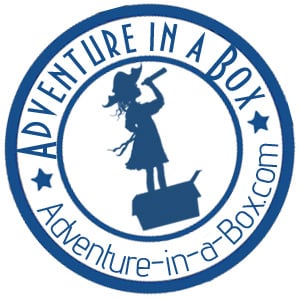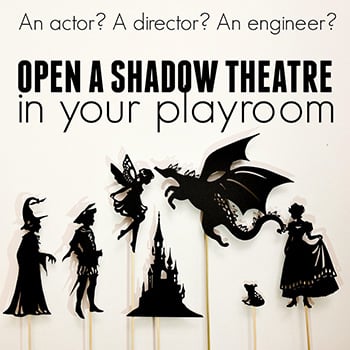We are adamant supporters of active play and development of gross motor skills! For children, they are linked with brain development, healthy habits, growing self-esteem and physical strength. In other words, running around is just as important as sitting down with puzzles, skipping is as much a skill to learn as reading, and climbing up a tree is a big achievement, not a mischief in the world of childhood.
Within our family, it means that we stay encouraging of Buddy’s active games even if we have to change our couch every few years as a result. With our permission, he used our current second-hand couch as his exercise mat, and it has gotten rather worn-out. However, I think it had its moment of glory, as this little guy made his first climbing attempts on it, then did his first jumps on its cushions, and now practices falling on it backwards, while giggling himself silly.
Buddy is outgrowing the couch gym, and we have to think of new challenges. We are currently building an indoor playground for him, and I hope to show it to you before long. In the meantime, we also look for simple solutions to give him some much needed exercise, so we decided to make a balance bench for him. It has been wonderful, and only took a couple of hours to build!
This post contains Amazon Affiliate links for your convenience.
The idea for this bench was inspired by a fascination I remember from my childhood: whenever there was a curb going the same way I was, I would be walking on it, pretending to be an acrobat. Buddy wholeheartedly supported my opinion as soon as he was able to walk. He held my hand and climbed on rock walls. Toddlers seem to love balancing on curbs, rocks and meridians!
This balance bench from Ikea is a good example of a store-bought balance bench. However, for Budster I wanted something low, so that if he stepped off the bench, he would safely land on the floor. Admittedly, I also thought that I could make a balance bench about four times cheaper.
Materials
– 1″ x 6″ x 4′ board for the top of the bench (a cheap knotty pine board is a perfect fit for this sort of project)
– a 1″ x 4″ x 4′ board, or better yet, a 2″ x 4″ x 4′ board for the legs
– a saw
– a drill
– wood filler or wooden dowels
– sanding paper or a palm sander (my saviour!)
Tutorial
1. The first board will become the top of the bench, and you will not need to do much more than sand its edges to reduce sharp corners. The second board will be turned into legs for the bench.
2. Make a template for the legs. My husband used a scroll saw to cut the legs out, so he made a template with soft curves. It was simply an aesthetic preference on our part. If you do not have a saw to cut curves, an isosceles trapezoid will make nice legs and can be cut with a handsaw. The top of the trapezoid should be about 1/2″ shorter than the width of your board, so 5″ if you use the same board as we did. The bottom of the trapezoid should be about 1/2″ longer than the width of your board, and that worked out to be 6″ for us.
Decide on the height of the legs, based on your child’s height. We chose ours to be 4″ tall. It seemed to be a good height for Buddy: it was challenging, but not dangerous. We were also following another goal in choosing this height: we wanted his beloved train tracks to go on top of the bench, and 4″ was the height of two raising tracks, joined together. You will see Buddy play with them in the end of this post.
3. Cut the legs and sand them. Make sure that the tops and the bottoms of them are flat.
4. Attach the legs to the board using deck screws. First, drill a pilot hole with a small drill bit, about the diameter of a screw’s shank (the part inside the threads), then switch to a drill bit the same diameter as the head of the screw, and re-drill the first 1/4″ or so of the pilot hole. This is done to countersink the screws, so that their heads are below the surface of the wood.
5. Use the wood filler to hide the holes. Let it dry, then sand it flush. Alternatively, use wooden dowels to plug the screw holes. Put a drop of wood glue inside of the hole, then force the dowel in and cut it off. Sand it, and you are done!
The bench is ready!
Try it on the floor, and if you are planning to use it on a slippery surface, consider gluing anti-slip strips on the bottoms of the legs.
Ideas for Play
1. The main idea behind the bench was, of course, to let Buddy exercise his balancing skills, but he also liked to jump off the bench, and adults in our family performed imitations of a flying swan while standing on the board. In my case, the swan was in a rather rough shape.
When Budster is older and he has friends over, they can have pillow fights while standing on top of the bench. I remember this game from my childhood! The first one to step down loses the fight, but the competition starts again immediately.
2. While we were planning the project on the floor, Budster claimed the long board as a track for his cars. He brought them over and pushed them around. When the bench was ready, he thought that it is a good height for playing with his wooden road tracks.
3. We made the height of this bench ideal for building Budster’s wooden railroad around it. The space beneath the bench makes a tunnel, and two ascending tracks reach the top of the bench, where the track continues to run elevated. While this purpose of the bench is not very obvious, we are excited for this secret use. Buddy loves his trains right now!
If you liked this craft, you may also find these related activities interesting:
– How to Make a Wooden Puppet Theatre
– Wooden Road Tracks and Ramps
If you want to stay updated on new stories from Adventure in a Box, consider subscribing to our Facebook, Pinterest, Twitter or Instagram pages.
Would you like more ideas on how to support development of gross motor skills indoors over the cold months? Check Gross Motor Activities from A to Z daily for new ideas. Our balance bench was for B… so there are many more ideas ahead! In addition to 26 active play gross motor ideas from the very best kid bloggers, we will also be offering our readers a chance to win a Parachute Play Pack from Discount School Supply. Enter to win below!














Oh, this bench is just beautiful! It’ll surely be a family heirloom for many children to use!
Thank you, Devany! I think we may also paint or varnish it eventually for preserving it better. :)